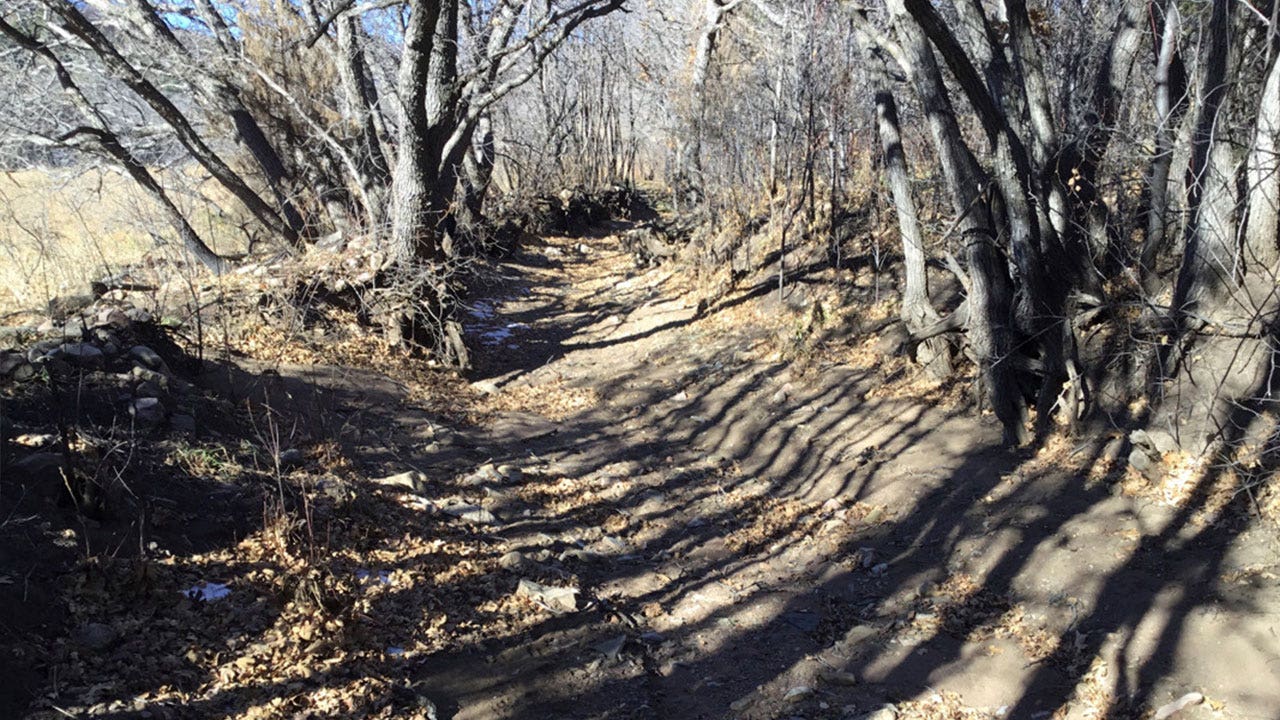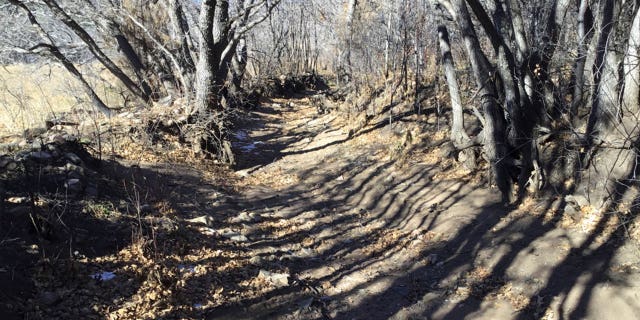New Mexico communities begin clearing water canals of heavy debris following devastating wildfire

It’s tradition in New Mexico’s rural communities — to gather with neighbors each spring, shovels and rakes in hand, to clean the earthen irrigation canals that will direct snowmelt from the surrounding mountains to crops, gardens and orchards.
Doing the job in the traditional way — by hand — is nearly impossible this year because dozens of the irrigation systems known as acequias are choked with ash, silt and other debris from flooding that followed the largest wildfire in New Mexico’s history — a conflagration sparked last year by the federal government during prescribed burn operations.
The flames swept across more than 530 squares miles of the Rocky Mountain foothills and burned for months, destroying homes and livelihoods.
While recovery is expected to take generations, work to clear the first acequia through a special effort led by the state Department of Transportation and local contractors began Monday near Cleveland, a mountain village southeast of Taos. There are about dozen more acequias on the list.
Crews are using excavators to dig out debris after firefighters spent a day clearing brush from the banks to provide access. Vacuum trucks are cleaning out culverts.
The equipment operators must have a light touch. Digging too deep could damage soil at the bottom that has become so tightly packed over decades that it keeps water from leaching out.

Silt fills the Acequia de Cañoncito from bank to bank near the community of Cleveland, New Mexico, on March 1, 2023. Crews on March 6, 2023, began using heavy equipment to remove the debris. (John Romero/New Mexico Department of Transportation via AP)
Engineers with the Federal Emergency Management Agency walked the acequia three times, using GPS to map it and to survey damage that stretches more than two-thirds of a mile.
“I’m so excited,” said Barbara Bradshaw, a commissioner on the Acequia de Cañoncito who has spent months making phone calls and sending letters in search of a path to get the repairs done as soon as possible. “We’ve already lost one crop year.”
Congress has approved billions of dollars in recovery funds for the area, but it will take time for the money to trickle down. New Mexico lawmakers also are considering legislation this year that would provide a funding stream for acequias in case of another natural disaster, given that the groups have limited resources due to their grassroots nature.
STUNNING TURKEY EARTHQUAKE RESCUES: TEEN, NEW FATHER SAVED 11 DAYS LATER IN ‘TRUE MIRACLE’
More than 30 families depend on the Acequia de Cañoncito, which is fed by a couple of canyons that originate in parts of the mountain range that were severely burned. Ash and silt rushed from the hillsides during last summer’s rainy season, clogging a diversion point for the irrigation system and culverts beyond that.
“Parts of the acequia are filled bank to bank and it looks like a path instead of an acequia. And we don’t know what’s under the mud and ash — how many trees are in there, how many rocks are in there,” Bradshaw said. “The force of the water was just remarkable.”
CLICK HERE TO GET THE FOX NEWS APP
John Romero, a division director with the state Transportation Department, described the material that needs to be removed as blackish muck. He said the work will take at least a couple of weeks and the list of acequias requesting help could grow given the scope of the damage.
“Everybody involved is very exhausted from it and they continue to do work,” he said of what has been a nearly yearlong ordeal for the communities scattered through the burn scar. “These kinds of events are so taxing on everyone.”
And it likely won’t be the end of it, Bradshaw said, wondering what this summer’s rains might bring down from the hills.
Share this news on your Fb,Twitter and Whatsapp
Times News Network:Latest News Headlines
Times News Network||Health||New York||USA News||Technology||World News